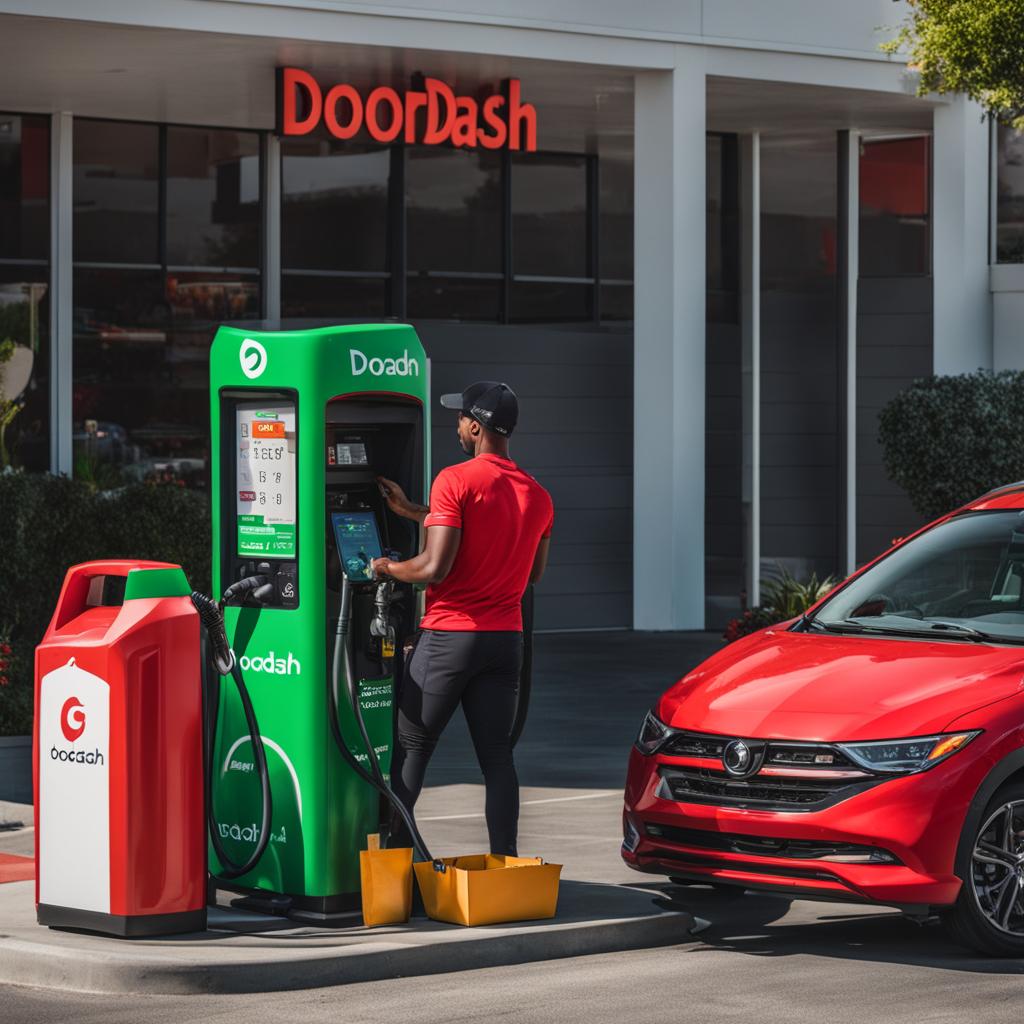As gas prices continue to rise nationwide, delivery services like DoorDash and Instacart are stepping up to support their drivers and mitigate the impact of surging fuel costs. These companies recognize that high gas prices can significantly affect the earnings of their drivers, who heavily rely on their vehicles for work. By implementing various measures and introducing new initiatives, DoorDash, Instacart, and other third-party delivery services are making a concerted effort to assist their drivers in navigating these challenging times.
Key Takeaways:
- DoorDash and Instacart are implementing measures to offset the rising fuel costs for their drivers.
- DoorDash offers cash bonuses and cashback on gas purchases, while Instacart introduces a temporary fuel surcharge on customer orders to directly benefit its drivers.
- Other companies like Uber, Lyft, Amazon Flex, and Grubhub are also taking steps to alleviate the burden of increasing gas prices for their respective drivers.
- Drivers can further maximize their savings by utilizing cashback apps and implementing fuel-saving strategies.
- The convenience and grocery delivery market is evolving, with increased competition and new players entering the space.
DoorDash’s Gas Rewards Program
DoorDash has introduced a Gas Rewards Program to help drivers offset the rising fuel costs. The program includes two key components: DasherDirect, a prepaid business Visa debit card that offers 10% cashback on gas purchases, and a weekly gas bonus for drivers who meet specific mileage requirements. The weekly gas bonus ranges from $5 to $15, depending on the total miles driven.
The Gas Rewards Program aims to provide financial relief by offering cash bonuses and cashback on gas purchases. By utilizing the DasherDirect card and meeting the weekly mileage targets, drivers can maximize their savings and mitigate the impact of increasing gas prices. This initiative demonstrates DoorDash’s commitment to supporting its drivers during these challenging times.
“The DoorDash Gas Rewards Program allows me to save money on fuel expenses, which is a significant benefit as gas prices continue to rise. The cashback on gas purchases and the weekly gas bonus provide financial relief and help offset the cost of fuel.”
– DoorDash driver
For drivers who heavily rely on their vehicles for deliveries, the Gas Rewards Program can make a noticeable difference in their bottom line. The cashback on gas purchases reduces the overall expenditure on fuel, while the weekly gas bonus offers a consistent additional reward for meeting mileage targets. This combination enables drivers to save money and increase their earnings.
DoorDash Gas Rewards Program Overview:
| Rewards Component | Description |
|---|---|
| DasherDirect | A prepaid business Visa debit card that provides 10% cashback on gas purchases for all DoorDash drivers. |
| Weekly Gas Bonus | A cash bonus ranging from $5 to $15, based on the total miles driven by drivers each week. |
Overall, DoorDash’s Gas Rewards Program is designed to alleviate the financial burden of rising gas prices for its drivers. Through cashback on gas purchases and a weekly gas bonus, DoorDash demonstrates its commitment to supporting the financial well-being of its drivers, ensuring they can continue earning income while mitigating the impact of increasing fuel costs.
Instacart’s Fuel Surcharge and Partnership with Upside
Instacart, the popular grocery delivery service, has taken proactive measures to support its drivers in the wake of surging gas prices. Recognizing the financial strain that rising fuel costs can place on their drivers, Instacart has implemented a temporary fuel surcharge on customer orders. This surcharge adds an additional $0.40 per order, which goes directly to the drivers, helping to offset the increased expense of fuel.
To further assist drivers, Instacart has also partnered with Upside, a gas cashback app. Through this partnership, Instacart drivers have the opportunity to earn up to $0.35 back per gallon for their first two full-ups when using Upside. This collaboration with Upside not only helps to alleviate the burden of rising gas prices but also provides drivers with additional temporary assistance to navigate these challenging times.
By implementing the fuel surcharge and partnering with Upside, Instacart demonstrates its commitment to supporting its drivers and helping them cope with the financial impact of rising fuel costs. These initiatives provide immediate relief and underscore Instacart’s dedication to the well-being of its driver community.
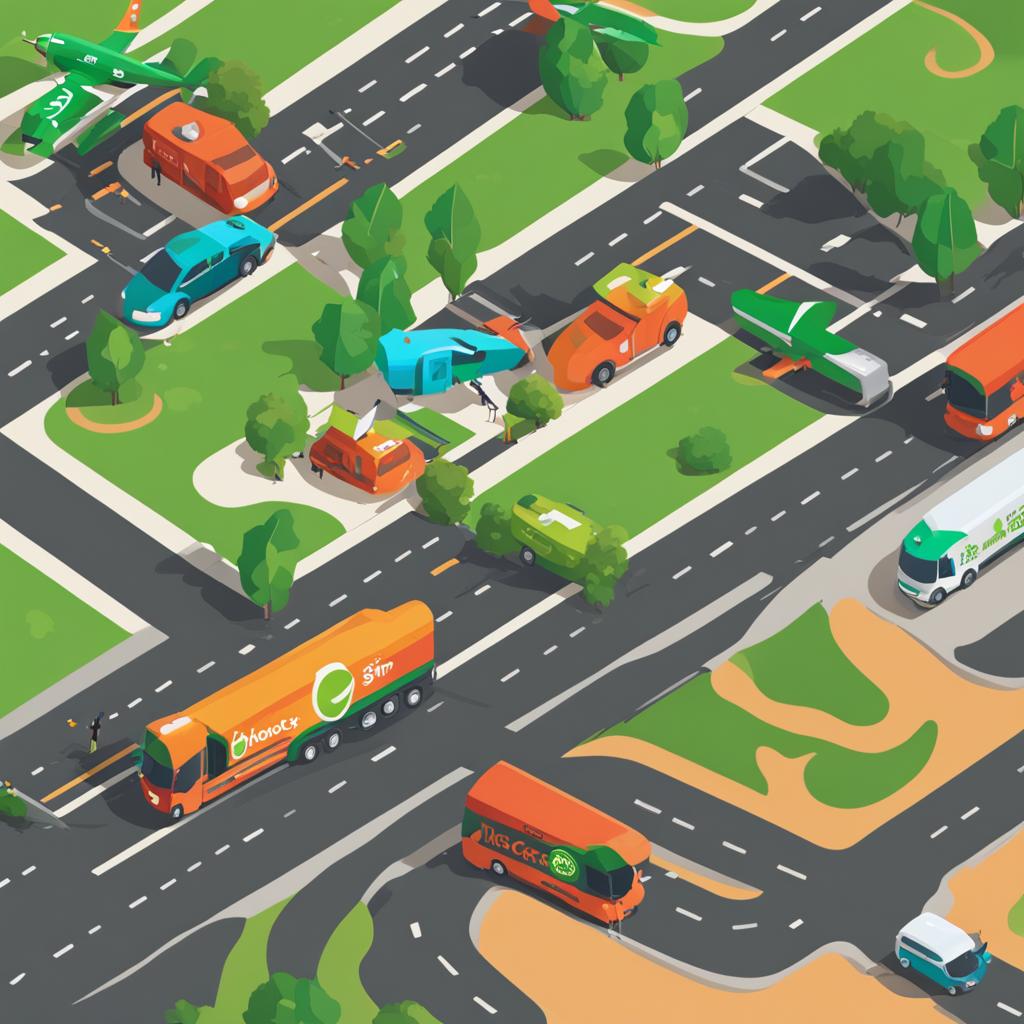
Instacart’s Fuel Surcharge and Partnership with Upside:
“The fuel surcharge implemented by Instacart and the partnership with Upside have been crucial in alleviating the financial strain caused by rising gas prices for us drivers. It shows that Instacart genuinely cares about our well-being and is willing to take proactive steps to support us.”
These initiatives have received positive feedback from Instacart’s driver community. According to Mary Stevens, an Instacart driver from California, “The fuel surcharge implemented by Instacart and the partnership with Upside have been crucial in alleviating the financial strain caused by rising gas prices for us drivers. It shows that Instacart genuinely cares about our well-being and is willing to take proactive steps to support us.”
With the fuel surcharge and Upside partnership, Instacart drivers can continue to provide essential grocery delivery services while mitigating the impact of increasing fuel costs. This collaboration exemplifies Instacart’s commitment to its drivers and reinforces its position as a leader in the delivery industry.
Uber’s Surcharge and Green Future Program
Uber understands the financial strain that surging gas prices can put on drivers, which is why they have implemented a surcharge on each trip and order. This surcharge varies based on location and is specifically designed to reflect the cost of fuel in each state. By passing on a portion of the additional expenses to riders, Uber aims to provide financial relief to their drivers.
But Uber doesn’t stop there. They have also launched their Green Future Program, an initiative that promotes the use of electric vehicles among Uber drivers. By encouraging drivers to transition to electric vehicles, Uber aims to reduce fuel expenses and contribute to a more environmentally friendly transportation system.
Participating drivers in the Green Future Program have the opportunity to earn an additional $1 per trip. This incentive not only helps offset the cost of charging electric vehicles but also rewards drivers for making sustainable choices. Additionally, Uber has partnered with Hertz to offer discounted Tesla rentals to drivers who want to experience the benefits of electric vehicles without the initial investment.
Uber’s Green Future Program is a win-win solution. It benefits both drivers and the environment by reducing fuel expenses and promoting sustainable transportation options. With these measures in place, Uber is actively working towards a greener and more cost-effective future for their drivers.
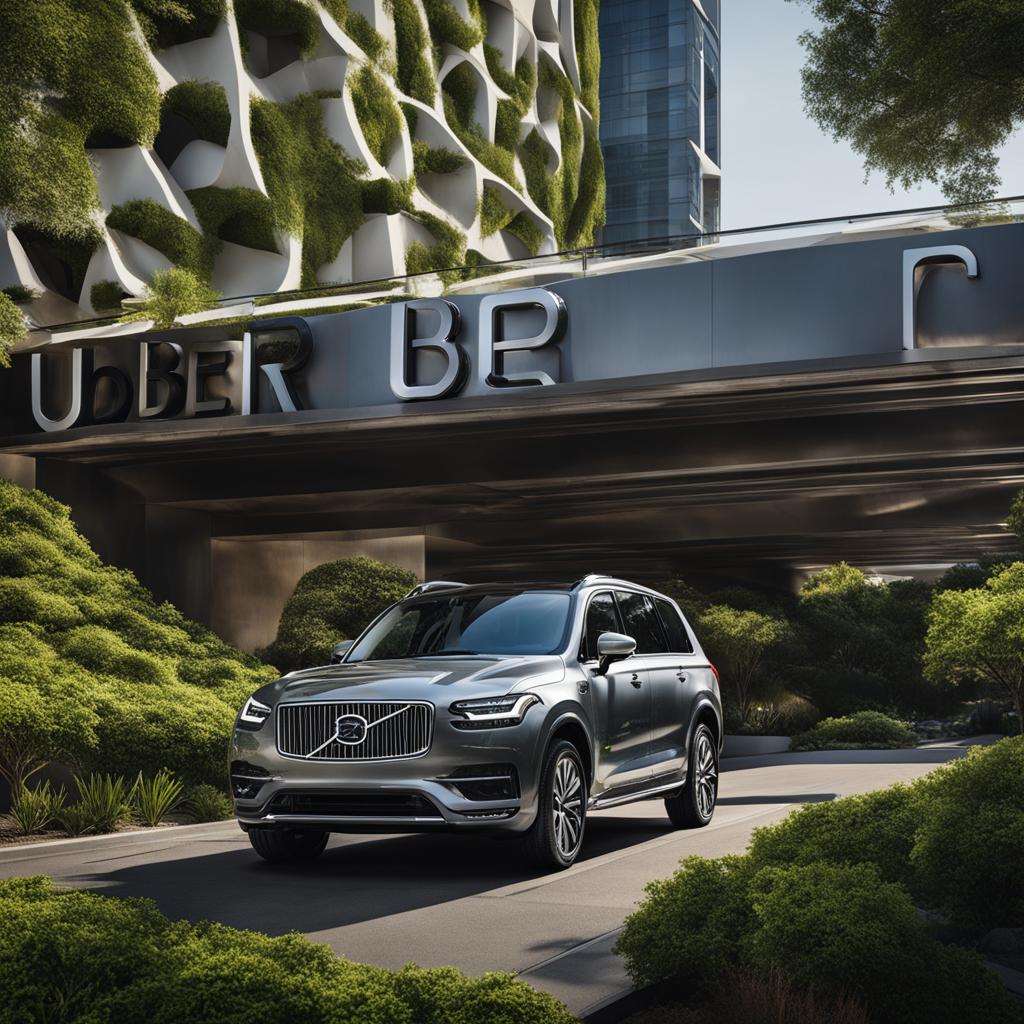
| Benefits of Uber’s Green Future Program | Cost Savings | Environmental Impact |
|---|---|---|
| Reduced fuel expenses | $1 additional earnings per trip | Reduces carbon emissions |
| Discounted Tesla rentals | Savings on vehicle maintenance | Decreases reliance on fossil fuels |
| Opportunity to be part of a sustainable transportation solution | Increased overall income potential | Supports the transition to clean energy |
Uber’s commitment to assisting drivers in facing the challenges posed by rising fuel costs is evident through their surcharge implementation and the Green Future Program. By providing financial support and promoting the use of electric vehicles, Uber is paving the way for a more sustainable and cost-effective future in the ridesharing industry.
Lyft’s Fuel Surcharge and Cashback on Gas
As gas prices continue to rise, Lyft has implemented a fuel surcharge program to help its drivers cope with the increasing costs. For each Lyft ride, a fuel surcharge of $0.55 is added, and the entire amount goes directly to the drivers. This surcharge is specifically designed to offset the impact of rising gas prices and provide financial support to Lyft drivers.
In addition to the fuel surcharge, Lyft offers its drivers a unique opportunity to earn cashback on their gas expenses. Through Lyft’s partnership with the Lyft Direct debit card, drivers can earn 4% to 5% cashback on their gas purchases.
By leveraging the Lyft Direct debit card, drivers can save on their fuel expenses and earn cashback rewards, effectively reducing the overall cost of operating their vehicles. This financial benefit is a valuable resource that helps Lyft drivers mitigate the financial impact of increasing gas costs.
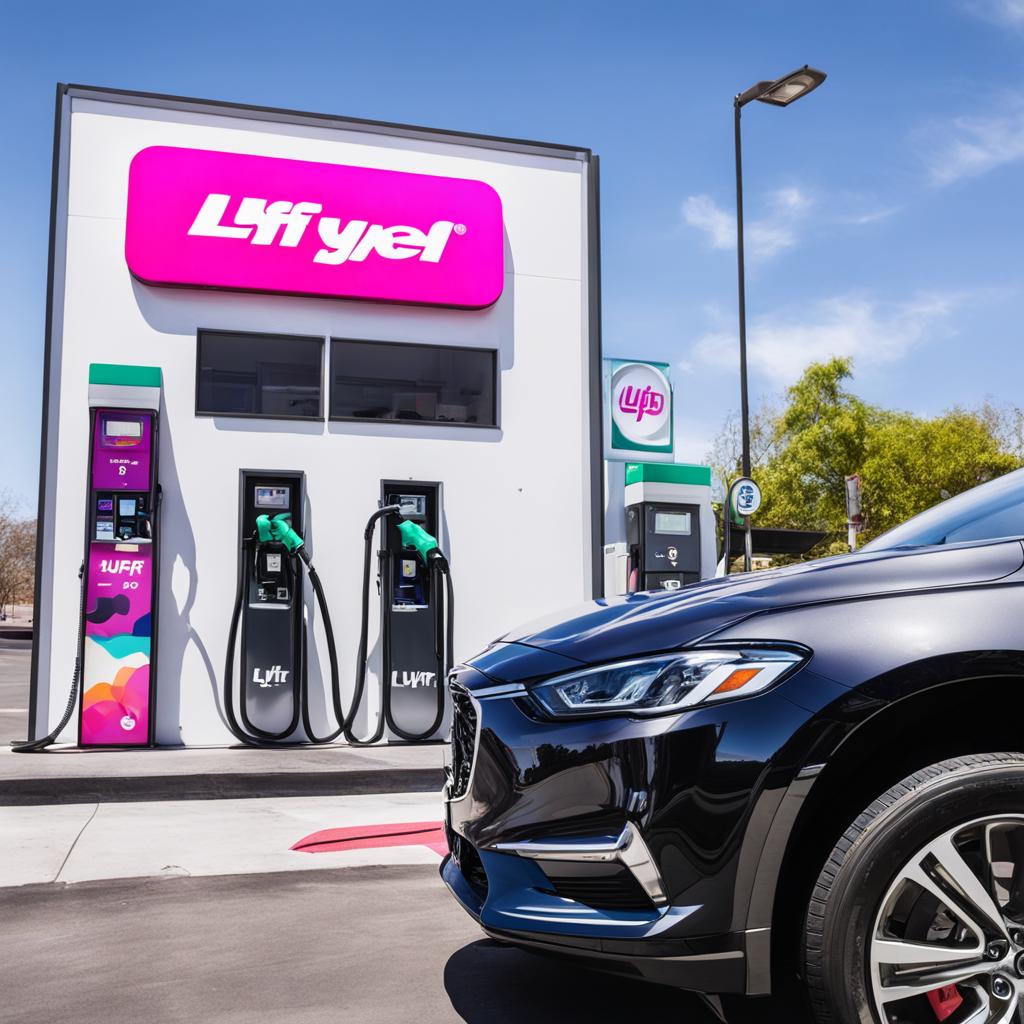
Lyft Fuel Surcharge and Cashback on Gas Summary
Lyft’s fuel surcharge program and cashback on gas offer significant financial assistance to its drivers, helping them navigate the challenges of rising gas prices. By implementing a fuel surcharge of $0.55 per ride and providing drivers with the opportunity to earn cashback on their gas expenses, Lyft ensures that its drivers have the support they need to offset the increasing fuel costs.
Through the Lyft Direct debit card partnership, drivers can save money on gas purchases and earn rewards, ultimately reducing their overall expenses. These initiatives reflect Lyft’s commitment to the well-being and financial stability of its drivers, further solidifying its position as a leading rideshare platform in the United States.
| Lyft Benefit | Details |
|---|---|
| Fuel Surcharge | $0.55 per ride |
| Cashback on Gas | 4% to 5% through Lyft Direct debit card |
Amazon Flex’s Increased Cashback on Fuel Purchases
As gas prices continue to rise, Amazon Flex is taking proactive measures to support its delivery partners and alleviate the financial burden of increasing fuel costs. One of the initiatives introduced by Amazon Flex is an increased cashback program on fuel purchases for drivers who utilize the Amazon Flex Rewards Debit card.
Initially, drivers were earning 6% cashback on their fuel purchases, but now they have the opportunity to earn up to 12% cashback, effectively doubling their savings. By utilizing the Flex Rewards Debit card, drivers can maximize their cashback benefits and offset a significant portion of their fuel expenses.
To further assist drivers in severely impacted areas, Amazon Flex has announced additional adjustments, although specific details have not been disclosed at this time. These adjustments are designed to provide further support and relief to drivers who are facing higher-than-average gas prices in their regions.
Overall, Amazon Flex’s increased cashback program on fuel purchases, in combination with additional undisclosed adjustments, aims to reduce the financial burden on its delivery partners and ensure they can continue to earn income while coping with rising gas prices.
Benefits of Amazon Flex’s Increased Cashback Program
Amazon Flex’s increased cashback program on fuel purchases provides several benefits for its delivery partners:
- Higher Savings: Drivers can earn up to 12% cashback on their fuel purchases, effectively doubling their savings compared to the previous cashback rate of 6%.
- Financial Relief: By offsetting a significant portion of their fuel expenses, drivers can experience financial relief and maintain profitability in their Amazon Flex delivery operations.
- Flexible Rewards: The cashback earned through the Amazon Flex Rewards Debit card can be utilized for future fuel purchases or other personal expenses, providing flexibility and value for drivers.
| Cashback Percentage | Previous Rate | Increased Rate |
|---|---|---|
| Fuel Purchases | 6% | 12% |
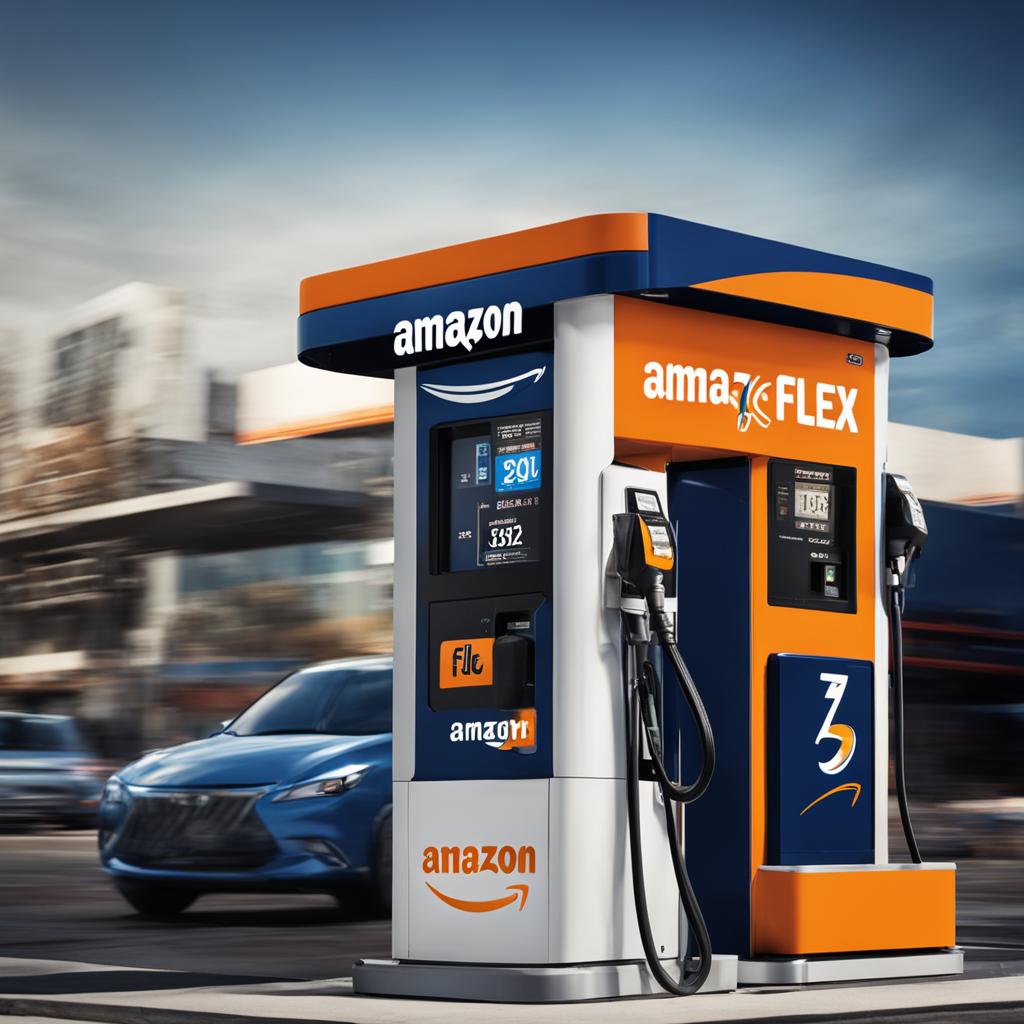
With the increased cashback program, Amazon Flex aims to support its delivery partners and help them overcome the challenges posed by rising gas prices. By providing higher savings and financial relief, Amazon Flex ensures that its delivery partners can continue to thrive and earn income in the evolving landscape of the gig economy.
Grubhub’s Increased Pay for Drivers
Grubhub recognizes the challenges faced by its drivers due to the rising gas prices. To support them during these difficult times, Grubhub has implemented an increase in pay. This pay adjustment takes into account the per-mile cost increases for gas in different regions, ensuring that drivers are adequately compensated for the additional expenses they incur.
While specific details regarding the pay adjustment have not been disclosed, Grubhub’s increased pay aims to address the financial impact of rising gas prices on its drivers. This adjustment not only helps drivers cover their fuel expenses but also reflects Grubhub’s commitment to supporting its driver community.
This increase in pay may also have an impact on the pricing structure for customers using Grubhub’s delivery service. Grubhub strives to strike a balance between providing fair compensation to its drivers and maintaining competitive pricing for its customers.
Grubhub’s dedication to supporting its drivers through increased pay demonstrates its commitment to their well-being and recognizes the challenges they face due to the rising gas prices.
| Benefits | Impact |
|---|---|
| Compensates drivers for per-mile cost increases | Reduces financial burden on drivers |
| Reflects Grubhub’s commitment to driver support | Enhances driver satisfaction and retention |
| May influence pricing structure for customers | Maintains a balance between fair compensation and competitive pricing |
Grubhub’s increased pay for drivers is a testament to its dedication to their well-being and its ongoing efforts to address the impact of rising gas prices. By providing financial support, Grubhub strives to ensure that its drivers can continue delivering meals while mitigating the effects of increased fuel expenses.
Fuel Surcharges and Driver Benefits in New York City
Drivers in New York City may not qualify for fuel surcharges or gas rewards programs due to the implementation of minimum earnings standards for drivers of app-based services. New York City lawmakers have passed bills to improve working conditions and pay for app-based workers, which include a set minimum per-trip payment for services like DoorDash and Instacart. These measures aim to protect drivers in the city and ensure fair compensation, but they may impact the availability of fuel-related benefits for drivers.
I understand the intention behind these regulations to safeguard drivers and support their livelihoods. However, it’s important to consider the potential impact on drivers’ ability to offset the rising fuel costs. While fuel surcharges and gas rewards programs can provide much-needed financial relief, the implementation of minimum earnings standards may limit the availability of these benefits in New York City. Drivers in the city may need to explore alternative strategies to manage their fuel expenses effectively.
Alternative Strategies for New York City Drivers
If fuel surcharges or gas rewards programs are not available in New York City, drivers can still take steps to minimize their fuel costs. Here are some alternative strategies that drivers can consider:
- Optimize driving routes to minimize mileage and reduce fuel consumption.
- Utilize real-time navigation apps to avoid traffic congestion and minimize idling time.
- Maintain proper tire pressure to improve fuel efficiency.
- Practice smooth acceleration and braking techniques to conserve fuel.
By implementing these strategies, drivers in New York City can still make an effort to save on fuel expenses and navigate the challenges posed by rising gas prices.
In addition, drivers should stay informed about any updates or changes to local regulations and programs that may affect their ability to access fuel-related benefits in the future.
Maximizing Savings with Cashback Apps
As delivery and rideshare drivers face the challenge of rising gas prices, utilizing cashback apps can be a valuable strategy for maximizing savings on fuel expenses. Two popular cashback apps that offer rewards on gas purchases are Upside and Dosh.
Upside:
Upside allows drivers to earn up to $0.25 cashback per gallon on their gas purchases. With a user-friendly app interface, drivers can easily find gas stations offering the most significant cashback rates in their area. By simply searching for nearby gas stations on the app’s map, drivers can quickly identify where they can save the most on their fuel expenses. With every gallon of gas, drivers earn cashback that adds up over time, providing valuable savings.
Dosh:
Dosh is another popular cashback app that provides opportunities for drivers to save on gas purchases. What sets Dosh apart is its partnership with various businesses, including occasional offers for cashback at gas stations. By linking their cards to the app, drivers have the opportunity to earn cashback not only on gas purchases but also on other everyday expenses. This innovative approach allows drivers to accumulate cashback rewards from multiple sources, increasing their savings potential.
By incorporating cashback apps like Upside and Dosh into their daily routine, drivers can significantly offset the rising cost of gas and save money in the process.
Benefits of Cashback Apps for Drivers
Utilizing cashback apps offers several benefits for delivery and rideshare drivers:
- Earn cashback on gas purchases
- Save money on everyday expenses
- Access exclusive cashback offers
- Conveniently track and accumulate cashback rewards
- Maximize savings on fuel expenses
Whether it’s earning cashback per gallon or taking advantage of occasional offers, cashback apps provide drivers with valuable opportunities to save money and optimize their earnings.
Comparing Upside and Dosh for Cashback on Gas
| Cashback App | Earned Cashback per Gallon | Additional Benefits |
|---|---|---|
| Upside | Up to $0.25 | User-friendly map interface with gas station cashback rates |
| Dosh | Occasional offers at select gas stations | Cashback on linked card purchases from various businesses |
Both Upside and Dosh offer unique features and benefits. While Upside provides consistent cashback per gallon, Dosh presents occasional offers and the opportunity to earn cashback on a broader range of purchases. Choosing the most suitable app depends on drivers’ preferences and individual spending habits.
“By utilizing cashback apps like Upside and Dosh, drivers can save money on gas purchases while enjoying the convenience of their everyday expenses. These apps serve as valuable tools for drivers looking to maximize their savings and offset the impact of rising gas prices.”
In conclusion, cashback apps such as Upside and Dosh provide delivery and rideshare drivers with an effective way to save money on gas purchases. Whether it’s earning cashback per gallon or taking advantage of occasional offers, these apps offer valuable benefits that can significantly offset rising fuel costs. By incorporating cashback apps into their routine, drivers can maximize their savings and optimize their earnings in the face of increasing gas prices.
Additional Tips for Drivers to Save on Gas
In addition to utilizing fuel-related benefits and cashback apps, drivers can implement various strategies to save on gas. These simple tips can help optimize fuel efficiency and reduce expenses:
1. Reduce Fuel Mileage
One of the most effective ways to save on gas is by reducing fuel mileage. By planning routes efficiently and minimizing unnecessary detours, drivers can avoid excessive mileage and conserve fuel. Utilizing navigation apps that offer real-time traffic updates can also help drivers avoid congested routes and further reduce fuel consumption.
2. Avoid Hard Braking
Hard braking not only increases wear and tear on brakes but also wastes fuel. By maintaining a safe following distance and anticipating stops, drivers can avoid sudden and aggressive braking, allowing their vehicles to coast smoothly to a halt. This gentle approach to braking can significantly improve fuel efficiency over time.
3. Check Tire Pressure Regularly
Driving with underinflated tires can decrease fuel efficiency. It is essential for drivers to check their tire pressure regularly and ensure that it matches the manufacturer’s recommendations. Properly inflated tires can reduce rolling resistance, optimize fuel consumption, and enhance overall vehicle performance.
4. Avoid Traffic
Sitting in traffic not only wastes time but also wastes fuel. Whenever possible, drivers should avoid heavily congested areas and peak traffic times. Utilizing navigation apps that provide real-time traffic updates and alternate route suggestions can help drivers navigate around traffic and save on both time and fuel.
By implementing these simple yet effective strategies, drivers can save on gas expenses and improve their overall fuel efficiency, ultimately maximizing their earnings.
The Impact of Rising Gas Prices on Delivery and Rideshare Drivers
Rising gas prices have had a significant impact on delivery and rideshare drivers, affecting their earnings and presenting challenges. However, many drivers still find these side hustles worthwhile due to the flexibility and potential for extra income they offer. While gas prices eat into their pay, drivers can take advantage of the financial assistance and benefits provided by companies like DoorDash and Instacart to mitigate the impact of rising fuel costs. Despite the challenges, delivery and rideshare driving continue to be viable options for earning money.
The Challenges of Rising Gas Prices
“The increasing cost of gas has made it more difficult for me to make a profit as a delivery driver. I have to spend a significant portion of my earnings on fuel expenses, which cuts into my overall income. It’s a constant struggle to keep up with rising gas prices and still make ends meet.”
The rising gas prices have forced drivers to spend a larger portion of their earnings on fuel expenses, reducing their overall income. This puts additional financial strain on drivers and makes it harder for them to maintain their livelihoods. However, despite these challenges, many drivers continue to choose delivery and rideshare driving as flexible side hustles due to the potential for supplemental income and the ability to work on their own schedule.
Leveraging Financial Assistance and Benefits
Companies like DoorDash and Instacart have recognized the impact of rising gas prices on their drivers and have implemented measures to provide financial assistance. DoorDash’s gas rewards program offers cash bonuses and cashback on gas purchases through their DasherDirect prepaid business Visa debit card. Instacart, on the other hand, has introduced a temporary fuel surcharge on customer orders, with the additional charge directly benefiting their drivers.
“The gas rewards program and fuel surcharge introduced by DoorDash and Instacart have been a lifeline for me as a driver. They help alleviate the burden of increasing fuel costs and allow me to continue earning income despite rising gas prices.”
By utilizing these programs, drivers can reduce the impact of rising gas prices on their earnings and maintain their financial stability. The additional financial assistance and benefits provided by companies in the delivery and rideshare industry help drivers navigate the challenges posed by fluctuating fuel costs.
The Viability of Delivery and Rideshare Driving
Despite the challenges posed by rising gas prices, delivery and rideshare driving remain viable options for earning money. The flexibility offered by these side hustles allows drivers to choose their own hours and fit work around their schedules. Additionally, for individuals seeking additional income or a flexible job, these opportunities can provide a valuable source of earnings.
In summary, rising gas prices have had a significant impact on delivery and rideshare drivers, affecting their overall earnings. However, many drivers continue to find these side hustles worth their time due to the flexibility and potential for extra income they offer. By leveraging the financial assistance and benefits provided by companies like DoorDash and Instacart, drivers can mitigate the impact of rising fuel costs. Despite the challenges, delivery and rideshare driving remain viable options for earning money in the face of rising gas prices.
The Future of Convenience and Grocery Delivery Services
The convenience delivery market, including grocery delivery services, is set to undergo significant disruption and growth in the coming years. As consumer preferences shift towards online shopping and on-demand deliveries, companies are strategically positioning themselves to capitalize on this evolving landscape. Leading players such as Amazon and Kroger are expanding their presence in the convenience space, posing tough competition for established third-party delivery services like DoorDash and Instacart.
To stay ahead in this highly competitive market, companies are continuously innovating and enhancing the convenience and efficiency of delivery services. For instance, Amazon has introduced its “Go Stores” concept, which utilizes advanced technologies like computer vision and sensor fusion to create cashierless shopping experiences. These stores provide customers with the convenience of grabbing items off the shelves and walking out, with their purchases automatically charged to their Amazon account.
Kroger, one of the largest supermarket chains in the United States, is also making significant strides in the convenience delivery market. The company offers a variety of delivery options, including home delivery, curbside pickup, and in-store shopping through its mobile app. By utilizing their extensive network of physical stores, Kroger aims to provide customers with a seamless shopping experience while leveraging the convenience of delivery.
With the convenience delivery market projected to grow by 5.5% in 2024, reaching an estimated revenue of $33 billion, it is evident that the demand for on-demand delivery services is on the rise. This growth is driven by factors such as changing consumer behaviors, increased adoption of digital platforms, and the ongoing COVID-19 pandemic.
As competition intensifies, companies in this space need to continually innovate and adapt to meet the evolving demands of their customers. This includes providing faster delivery times, expanding product offerings, and enhancing the overall delivery experience.
Conclusion
In conclusion, DoorDash, Instacart, and other third-party delivery services are taking proactive measures to support their drivers amid surging gas prices. By introducing fuel surcharges, cashback programs, and other benefits, these companies aim to offset the impact of rising fuel costs and provide financial relief to their drivers. the support provided by these companies enables drivers to continue earning income even in the face of increasing gas prices.
Furthermore, drivers can take advantage of cashback apps like Upside and Dosh to maximize their savings on fuel expenses. These apps offer opportunities for drivers to earn cashback on gas purchases, allowing them to save money while on the road. Additionally, implementing fuel-saving strategies such as avoiding hard braking, checking tire pressure, and using navigation apps to avoid traffic can further help drivers reduce their fuel consumption and minimize expenses.
Despite the challenges posed by rising gas prices, delivery and rideshare driving remain viable options for earning income. DoorDash, Instacart, and other companies in the convenience and grocery delivery market are continuously adapting to changing consumer habits and striving to provide cost-effective solutions. The industry is also experiencing increased competition, with new players entering the market such as Amazon Go Stores and Kroger. This indicates the evolving landscape of convenience and grocery delivery services, driven by the demand for convenience and the changing market dynamics.
In summary, DoorDash, Instacart, and other third-party delivery services are committed to helping their drivers cope with surging gas prices by offering various initiatives and benefits. Through their support, drivers can continue to earn income while minimizing the impact of rising fuel costs. As the convenience and grocery delivery market continues to evolve, these companies adapt to meet the changing needs of consumers and provide cost-effective solutions. With the assistance of fuel surcharges, cashback programs, and the implementation of fuel-saving strategies, drivers can navigate the challenges posed by rising gas prices and thrive in the delivery industry.
FAQ
What initiatives are DoorDash and Instacart taking to help their drivers with surging gas prices?
DoorDash is offering cash bonuses and cashback on gas purchases through its Gas Rewards Program, while Instacart has implemented a temporary fuel surcharge on customer orders to directly benefit its drivers.
How does DoorDash’s Gas Rewards Program work?
DoorDash’s Gas Rewards Program consists of two parts: DasherDirect, a prepaid business Visa debit card that provides 10% cashback on gas purchases for all DoorDash drivers, and a weekly gas bonus for drivers who complete a certain number of miles per week.
What is Instacart’s fuel surcharge and how does it help drivers?
Instacart has implemented a temporary fuel surcharge on customer orders, adding an additional
FAQ
What initiatives are DoorDash and Instacart taking to help their drivers with surging gas prices?
DoorDash is offering cash bonuses and cashback on gas purchases through its Gas Rewards Program, while Instacart has implemented a temporary fuel surcharge on customer orders to directly benefit its drivers.
How does DoorDash’s Gas Rewards Program work?
DoorDash’s Gas Rewards Program consists of two parts: DasherDirect, a prepaid business Visa debit card that provides 10% cashback on gas purchases for all DoorDash drivers, and a weekly gas bonus for drivers who complete a certain number of miles per week.
What is Instacart’s fuel surcharge and how does it help drivers?
Instacart has implemented a temporary fuel surcharge on customer orders, adding an additional $0.40 that goes directly to its drivers. This surcharge helps offset the rising gas prices and provides immediate financial assistance.
Has Uber introduced any measures to help drivers with surging gas prices?
Yes, Uber has implemented a surcharge on each trip and order, varying based on location and reflecting the cost of fuel in each state. Uber has also launched its Green Future Program, offering incentives for drivers to use electric vehicles.
What benefits does Lyft offer to help their drivers mitigate the impact of rising gas costs?
Lyft has introduced a fuel surcharge of $0.55 per ride, with 100% of the surcharge going directly to its drivers. Lyft also offers its drivers the opportunity to earn cashback on gas purchases through its partnership with Lyft Direct debit card.
How does Amazon Flex support its delivery partners with rising gas prices?
Amazon Flex has doubled the cashback on fuel purchases for its delivery partners who use the Amazon Flex Rewards Debit card. Initially earning 6% back on gas purchases, drivers can now earn up to 12% back to offset the rising fuel costs.
What adjustments has Grubhub made to help its drivers deal with increasing gas prices?
Grubhub has increased its pay for drivers to account for per-mile cost increases for gas in different regions, although specific details about the pay adjustment have not been provided.
Are there any fuel-related benefits for drivers in New York City?
Drivers in New York City may not qualify for fuel surcharges or gas rewards programs due to the implementation of minimum earnings standards for app-based workers. Legislation has been passed to improve the working conditions and pay for app-based workers, which may impact the availability of fuel-related benefits.
Are there any cashback apps that can help delivery and rideshare drivers save on gas?
Yes, drivers can utilize cashback apps like Upside and Dosh, which offer rewards on gas purchases. Upside allows drivers to earn up to $0.25 back per gallon, while Dosh offers occasional offers for cashback on gas at participating stations.
What additional tips can help drivers save on gas expenses?
Drivers can save on gas by shifting to neutral in traffic, avoiding hard braking, maintaining proper tire pressure, and utilizing navigation apps to avoid traffic whenever possible.
How do rising gas prices impact delivery and rideshare drivers?
Rising gas prices pose challenges for drivers, affecting their overall earnings. However, many drivers still find these side hustles worth their time due to the flexibility and potential for extra income.
What is the future of convenience and grocery delivery services?
The convenience and grocery delivery market is expected to experience disruption and growth as companies like Amazon and Kroger expand their presence. The market is projected to increase by 5.5% in 2024, indicating the evolving landscape of these services.
What is the overall impact of DoorDash, Instacart, and other delivery services on rising gas prices?
DoorDash, Instacart, and other third-party delivery services are taking proactive measures to support their drivers amid surging gas prices. The introduction of fuel surcharges, cashback programs, and other benefits aims to offset the impact of rising fuel costs.
.40 that goes directly to its drivers. This surcharge helps offset the rising gas prices and provides immediate financial assistance.
Has Uber introduced any measures to help drivers with surging gas prices?
Yes, Uber has implemented a surcharge on each trip and order, varying based on location and reflecting the cost of fuel in each state. Uber has also launched its Green Future Program, offering incentives for drivers to use electric vehicles.
What benefits does Lyft offer to help their drivers mitigate the impact of rising gas costs?
Lyft has introduced a fuel surcharge of
FAQ
What initiatives are DoorDash and Instacart taking to help their drivers with surging gas prices?
DoorDash is offering cash bonuses and cashback on gas purchases through its Gas Rewards Program, while Instacart has implemented a temporary fuel surcharge on customer orders to directly benefit its drivers.
How does DoorDash’s Gas Rewards Program work?
DoorDash’s Gas Rewards Program consists of two parts: DasherDirect, a prepaid business Visa debit card that provides 10% cashback on gas purchases for all DoorDash drivers, and a weekly gas bonus for drivers who complete a certain number of miles per week.
What is Instacart’s fuel surcharge and how does it help drivers?
Instacart has implemented a temporary fuel surcharge on customer orders, adding an additional $0.40 that goes directly to its drivers. This surcharge helps offset the rising gas prices and provides immediate financial assistance.
Has Uber introduced any measures to help drivers with surging gas prices?
Yes, Uber has implemented a surcharge on each trip and order, varying based on location and reflecting the cost of fuel in each state. Uber has also launched its Green Future Program, offering incentives for drivers to use electric vehicles.
What benefits does Lyft offer to help their drivers mitigate the impact of rising gas costs?
Lyft has introduced a fuel surcharge of $0.55 per ride, with 100% of the surcharge going directly to its drivers. Lyft also offers its drivers the opportunity to earn cashback on gas purchases through its partnership with Lyft Direct debit card.
How does Amazon Flex support its delivery partners with rising gas prices?
Amazon Flex has doubled the cashback on fuel purchases for its delivery partners who use the Amazon Flex Rewards Debit card. Initially earning 6% back on gas purchases, drivers can now earn up to 12% back to offset the rising fuel costs.
What adjustments has Grubhub made to help its drivers deal with increasing gas prices?
Grubhub has increased its pay for drivers to account for per-mile cost increases for gas in different regions, although specific details about the pay adjustment have not been provided.
Are there any fuel-related benefits for drivers in New York City?
Drivers in New York City may not qualify for fuel surcharges or gas rewards programs due to the implementation of minimum earnings standards for app-based workers. Legislation has been passed to improve the working conditions and pay for app-based workers, which may impact the availability of fuel-related benefits.
Are there any cashback apps that can help delivery and rideshare drivers save on gas?
Yes, drivers can utilize cashback apps like Upside and Dosh, which offer rewards on gas purchases. Upside allows drivers to earn up to $0.25 back per gallon, while Dosh offers occasional offers for cashback on gas at participating stations.
What additional tips can help drivers save on gas expenses?
Drivers can save on gas by shifting to neutral in traffic, avoiding hard braking, maintaining proper tire pressure, and utilizing navigation apps to avoid traffic whenever possible.
How do rising gas prices impact delivery and rideshare drivers?
Rising gas prices pose challenges for drivers, affecting their overall earnings. However, many drivers still find these side hustles worth their time due to the flexibility and potential for extra income.
What is the future of convenience and grocery delivery services?
The convenience and grocery delivery market is expected to experience disruption and growth as companies like Amazon and Kroger expand their presence. The market is projected to increase by 5.5% in 2024, indicating the evolving landscape of these services.
What is the overall impact of DoorDash, Instacart, and other delivery services on rising gas prices?
DoorDash, Instacart, and other third-party delivery services are taking proactive measures to support their drivers amid surging gas prices. The introduction of fuel surcharges, cashback programs, and other benefits aims to offset the impact of rising fuel costs.
.55 per ride, with 100% of the surcharge going directly to its drivers. Lyft also offers its drivers the opportunity to earn cashback on gas purchases through its partnership with Lyft Direct debit card.
How does Amazon Flex support its delivery partners with rising gas prices?
Amazon Flex has doubled the cashback on fuel purchases for its delivery partners who use the Amazon Flex Rewards Debit card. Initially earning 6% back on gas purchases, drivers can now earn up to 12% back to offset the rising fuel costs.
What adjustments has Grubhub made to help its drivers deal with increasing gas prices?
Grubhub has increased its pay for drivers to account for per-mile cost increases for gas in different regions, although specific details about the pay adjustment have not been provided.
Are there any fuel-related benefits for drivers in New York City?
Drivers in New York City may not qualify for fuel surcharges or gas rewards programs due to the implementation of minimum earnings standards for app-based workers. Legislation has been passed to improve the working conditions and pay for app-based workers, which may impact the availability of fuel-related benefits.
Are there any cashback apps that can help delivery and rideshare drivers save on gas?
Yes, drivers can utilize cashback apps like Upside and Dosh, which offer rewards on gas purchases. Upside allows drivers to earn up to
FAQ
What initiatives are DoorDash and Instacart taking to help their drivers with surging gas prices?
DoorDash is offering cash bonuses and cashback on gas purchases through its Gas Rewards Program, while Instacart has implemented a temporary fuel surcharge on customer orders to directly benefit its drivers.
How does DoorDash’s Gas Rewards Program work?
DoorDash’s Gas Rewards Program consists of two parts: DasherDirect, a prepaid business Visa debit card that provides 10% cashback on gas purchases for all DoorDash drivers, and a weekly gas bonus for drivers who complete a certain number of miles per week.
What is Instacart’s fuel surcharge and how does it help drivers?
Instacart has implemented a temporary fuel surcharge on customer orders, adding an additional $0.40 that goes directly to its drivers. This surcharge helps offset the rising gas prices and provides immediate financial assistance.
Has Uber introduced any measures to help drivers with surging gas prices?
Yes, Uber has implemented a surcharge on each trip and order, varying based on location and reflecting the cost of fuel in each state. Uber has also launched its Green Future Program, offering incentives for drivers to use electric vehicles.
What benefits does Lyft offer to help their drivers mitigate the impact of rising gas costs?
Lyft has introduced a fuel surcharge of $0.55 per ride, with 100% of the surcharge going directly to its drivers. Lyft also offers its drivers the opportunity to earn cashback on gas purchases through its partnership with Lyft Direct debit card.
How does Amazon Flex support its delivery partners with rising gas prices?
Amazon Flex has doubled the cashback on fuel purchases for its delivery partners who use the Amazon Flex Rewards Debit card. Initially earning 6% back on gas purchases, drivers can now earn up to 12% back to offset the rising fuel costs.
What adjustments has Grubhub made to help its drivers deal with increasing gas prices?
Grubhub has increased its pay for drivers to account for per-mile cost increases for gas in different regions, although specific details about the pay adjustment have not been provided.
Are there any fuel-related benefits for drivers in New York City?
Drivers in New York City may not qualify for fuel surcharges or gas rewards programs due to the implementation of minimum earnings standards for app-based workers. Legislation has been passed to improve the working conditions and pay for app-based workers, which may impact the availability of fuel-related benefits.
Are there any cashback apps that can help delivery and rideshare drivers save on gas?
Yes, drivers can utilize cashback apps like Upside and Dosh, which offer rewards on gas purchases. Upside allows drivers to earn up to $0.25 back per gallon, while Dosh offers occasional offers for cashback on gas at participating stations.
What additional tips can help drivers save on gas expenses?
Drivers can save on gas by shifting to neutral in traffic, avoiding hard braking, maintaining proper tire pressure, and utilizing navigation apps to avoid traffic whenever possible.
How do rising gas prices impact delivery and rideshare drivers?
Rising gas prices pose challenges for drivers, affecting their overall earnings. However, many drivers still find these side hustles worth their time due to the flexibility and potential for extra income.
What is the future of convenience and grocery delivery services?
The convenience and grocery delivery market is expected to experience disruption and growth as companies like Amazon and Kroger expand their presence. The market is projected to increase by 5.5% in 2024, indicating the evolving landscape of these services.
What is the overall impact of DoorDash, Instacart, and other delivery services on rising gas prices?
DoorDash, Instacart, and other third-party delivery services are taking proactive measures to support their drivers amid surging gas prices. The introduction of fuel surcharges, cashback programs, and other benefits aims to offset the impact of rising fuel costs.
.25 back per gallon, while Dosh offers occasional offers for cashback on gas at participating stations.
What additional tips can help drivers save on gas expenses?
Drivers can save on gas by shifting to neutral in traffic, avoiding hard braking, maintaining proper tire pressure, and utilizing navigation apps to avoid traffic whenever possible.
How do rising gas prices impact delivery and rideshare drivers?
Rising gas prices pose challenges for drivers, affecting their overall earnings. However, many drivers still find these side hustles worth their time due to the flexibility and potential for extra income.
What is the future of convenience and grocery delivery services?
The convenience and grocery delivery market is expected to experience disruption and growth as companies like Amazon and Kroger expand their presence. The market is projected to increase by 5.5% in 2024, indicating the evolving landscape of these services.
What is the overall impact of DoorDash, Instacart, and other delivery services on rising gas prices?
DoorDash, Instacart, and other third-party delivery services are taking proactive measures to support their drivers amid surging gas prices. The introduction of fuel surcharges, cashback programs, and other benefits aims to offset the impact of rising fuel costs.
Our Friends
- https://millennialmoneyman.com/doordash-instacart-helping-with-surging-gas-prices/
- https://www.sandiegouniontribune.com/business/nation/story/2024-09-19/instacart-goes-from-the-supermarket-to-the-stock-market-raising-660-million-with-its-ipo
- https://foodondemand.com/02112024/doordash-grabs-majority-of-surging-convenience-market/
Money posts:
 Instacart vs. DoorDash: Which is Best for Drivers in (2024)?
Instacart vs. DoorDash: Which is Best for Drivers in (2024)?
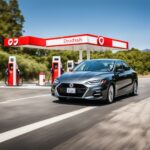 Does DoorDash Pay for Gas in 2024? Everything You Need to Know
Does DoorDash Pay for Gas in 2024? Everything You Need to Know
 DoorDash Driver Review | How Much Can You Make?
DoorDash Driver Review | How Much Can You Make?
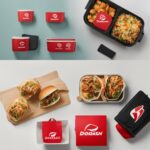 DoorDash vs. Grubhub: Which is Best for Drivers in 2024
DoorDash vs. Grubhub: Which is Best for Drivers in 2024
 DoorDash vs. Uber Eats: Which Pays Better for Drivers? (2024)
DoorDash vs. Uber Eats: Which Pays Better for Drivers? (2024)
 Stuck on the DoorDash Waitlist? What Drivers Should Do in 2024
Stuck on the DoorDash Waitlist? What Drivers Should Do in 2024
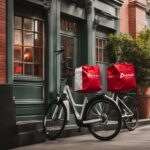 DoorDash vs. Uber Eats: Which Is the Better Food Delivery Service?
DoorDash vs. Uber Eats: Which Is the Better Food Delivery Service?
 DoorDash vs. Postmates: Which is Better for Drivers in 2024
DoorDash vs. Postmates: Which is Better for Drivers in 2024
